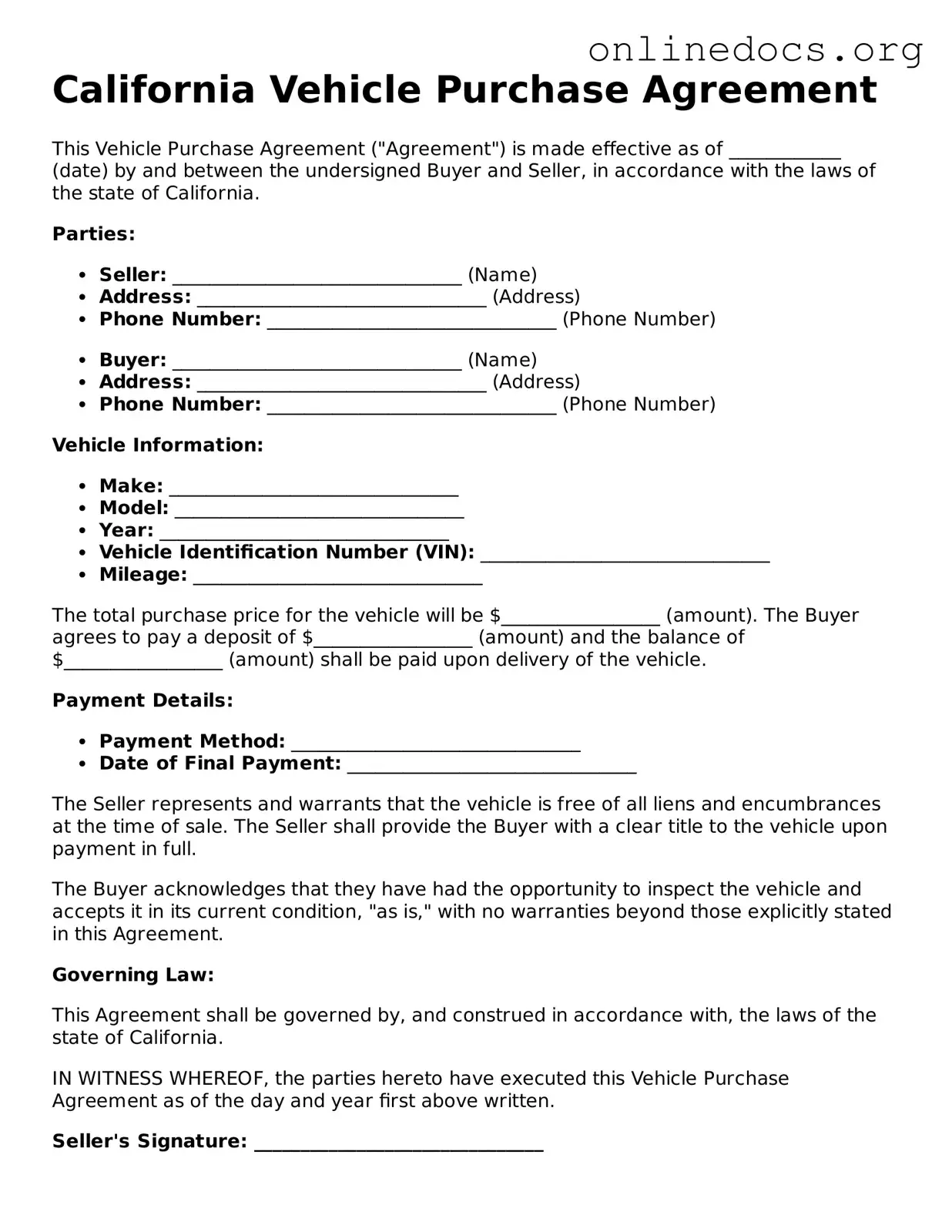The California Vehicle Purchase Agreement form shares similarities with the Bill of Sale. Both documents serve as proof of a transaction between a buyer and a seller. A Bill of Sale typically outlines the details of the vehicle, including the make, model, year, and Vehicle Identification Number (VIN). It also specifies the purchase price and the date of sale. While the Vehicle Purchase Agreement may include additional terms and conditions, both documents finalize the transfer of ownership and protect the interests of both parties involved in the sale.
Another document that resembles the Vehicle Purchase Agreement is the Lease Agreement. While a Lease Agreement pertains to renting a vehicle rather than purchasing it, both documents outline the terms of use, responsibilities, and obligations of the parties involved. They detail payment terms, duration, and conditions for termination. In essence, both documents establish a legal framework for the transaction, ensuring that both parties understand their rights and responsibilities.
The Purchase Order is also similar in nature to the Vehicle Purchase Agreement. A Purchase Order is used in various commercial transactions to confirm the purchase of goods or services. Like the Vehicle Purchase Agreement, it includes specific details about the item being purchased, the price, and the terms of payment. Both documents serve as a formal agreement that can be referenced in case of disputes, ensuring clarity in the transaction process.
Next, the Sales Agreement is akin to the Vehicle Purchase Agreement in that it outlines the terms of sale for any product, including vehicles. A Sales Agreement typically covers the buyer's and seller's obligations, payment terms, and any warranties or guarantees. Similar to the Vehicle Purchase Agreement, it serves as a binding contract that protects both parties by clearly defining the expectations and responsibilities associated with the sale.
In addition to these pivotal documents, it's essential to consider the role of the All Templates PDF for facilitating various transactions, ensuring that all necessary information is documented and protected during the process of buying or selling personal property.
The Financing Agreement also parallels the Vehicle Purchase Agreement, particularly when the buyer finances the vehicle purchase. This document outlines the loan terms, including interest rates, payment schedules, and consequences of default. Both agreements are crucial in establishing the financial aspects of the vehicle purchase, ensuring that the buyer understands the costs involved and the lender's rights in the event of non-payment.
Finally, the Title Transfer Document is closely related to the Vehicle Purchase Agreement. This document is necessary for officially transferring ownership of the vehicle from the seller to the buyer. While the Vehicle Purchase Agreement details the sale terms, the Title Transfer Document is the legal instrument that completes the transfer. Both documents work in tandem to ensure that the transaction is legally recognized and that the buyer is the rightful owner of the vehicle.
